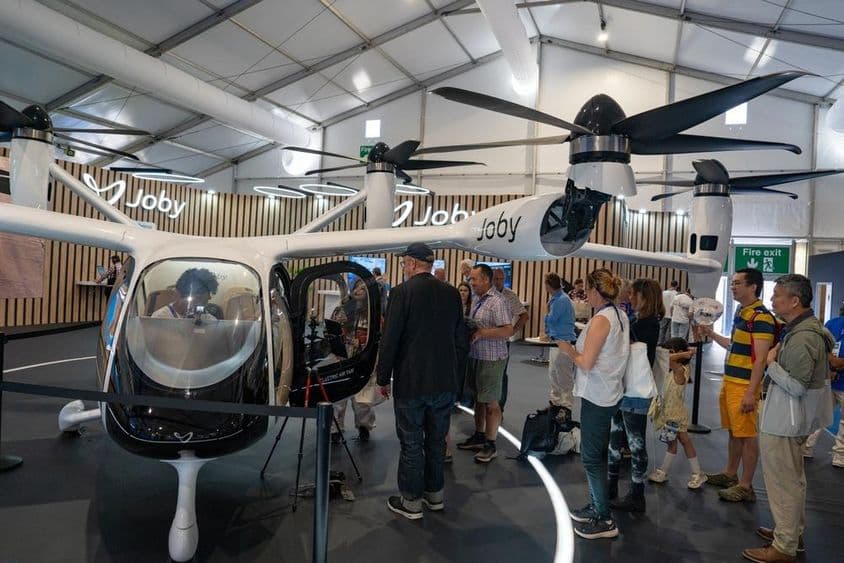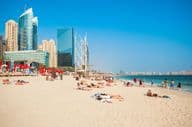Dubai's Futuristic Flying Taxis: Launch Nears

Dubai's Flying Taxis: Free Test Rides for 2026
Dubai once again proves why it is considered a city of the future: it is preparing to introduce its first electric flying taxis, which will not only be showcased but also be available for a few lucky passengers to try out for free at the beginning of 2026. The Roads and Transport Authority (RTA) of the Emirates and its technological partner, Joby Aviation, aim to gather feedback during the test period to optimize the service before its commercial launch at the end of 2026.
The First Introduction of the Flying Taxi
At the Dubai Airshow 2025 event, visitors could already see up close the electric flying taxi, which is expected to take to the skies in the first quarter of 2026. The aircraft developed by Joby Aviation completed a 17-minute test flight from the Margham desert area to Al Maktoum International Airport, a journey that takes about 50 minutes by road — highlighting an impressive time-saving aspect already.
Free Rides for Selected Passengers
Not everyone will get an immediate flight during the test period, as the RTA will only allow pre-selected passengers to board the flights. These will mainly include representatives from governmental organizations and private companies, whose feedback will help in fine-tuning the service. The goal is clear: to perfect the operation of the flying taxi based on real-user experiences before making it available to the general public.
Strategic Goal: Dubai as a Mobility Hub
According to the leadership of Dubai's Roads and Transport Authority (RTA), the introduction of electric flying taxis is part of a long-term strategy to make Dubai a global hub for sustainable, innovative transport solutions. The aim is for travelers to move faster, more safely, and in an environmentally friendly way between key urban areas.
For example, a journey from Dubai International Airport to Palm Jumeirah could take just 10 minutes by flying taxi instead of the current 45-minute car ride. This offers not only convenience but also logistical advantages for tourists, business people, and locals.
The Vertiport Network: A New Dimension in Urban Transport
For the success of the service, the RTA considers a well-developed vertiport network essential. By 2026, four such facilities are expected to be built at key locations in Dubai. The largest center is near Dubai International Airport, a four-story, 3,100-square-meter structure capable of handling about 42,000 take-offs and landings annually, serving 170,000 passengers.
The other vertiports:
Zabeel Dubai Mall Parking (managed by Emaar Properties): providing direct access to the heart of downtown.
Atlantis The Royal, Palm Jumeirah: being built in close proximity to luxury beaches and entertainment venues, at a strategic location.
Dubai Marina – American University Parking (supervised by Wasl Asset Management Group): connecting residential areas with the Dubai Internet City business district.
Incorporating Existing Helipads is Also Considered
To expand the infrastructure necessary for operating flying taxis, the RTA is also considering incorporating some existing helicopter landing pads (helipads). However, these must meet strict requirements, including proper electric charging facilities and connection to the public transportation network.
According to the RTA, not all helipads are immediately suitable for such purposes, but where possible, they are working closely with the relevant authorities on modifications.
More Than a Journey: Experience and Integration
The introduction of the flying taxi not only adds a new means of transport to Dubai's urban palette but also offers an entirely new experience. The plans are for the new service to integrate with the existing public transport system, including the metro, electric scooters, and bike-sharing systems. This allows for so-called "multi-modal transportation," where travelers can experience transfers as a single seamless experience.
What is unique about the flying taxis is that they operate on electric power, so their noise and environmental impact are low, aligning with Dubai's sustainability goals.
Commercial Launch Late in 2026
While the test period may start as early as the first quarter of 2026, the commercial flying taxi service available to the public is expected only by the end of the year. The experiences gained, user feedback, and technological developments until then will contribute to the service launching in a mature and safe form.
Summary
Dubai is realizing step-by-step what other cities can only dream of: integrating urban air transport into everyday travel. The flying taxi is not only a technological feat but also a strategic move — strengthening Dubai's position as a key player in smart, future-oriented urban solutions. If everything goes according to plan, transportation above Dubai could become as natural as the subway or tram in just a few years.
(The source of the article is the statement from the Roads and Transport Authority (RTA).)
If you find any errors on this page, please let us know via email.


